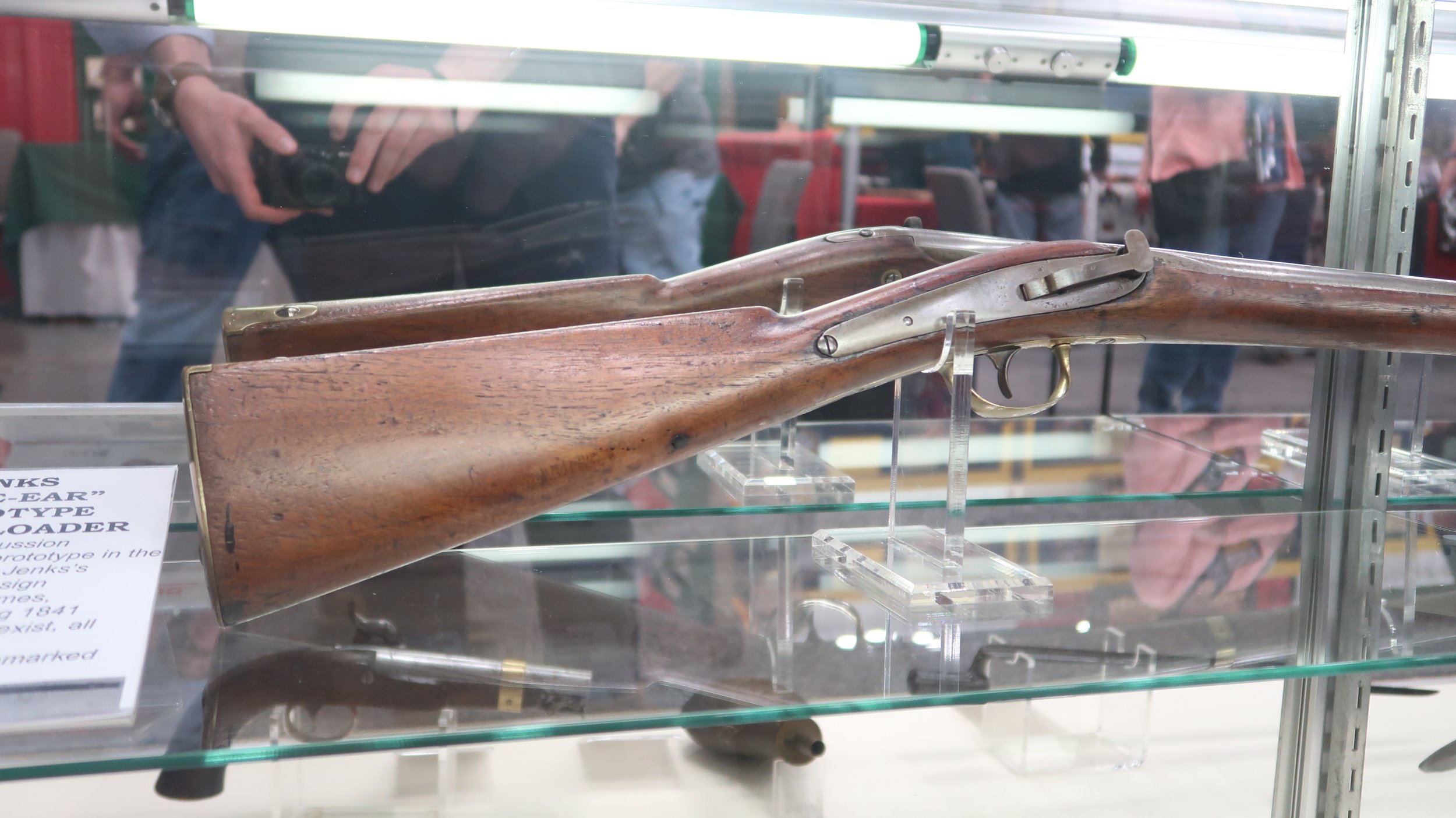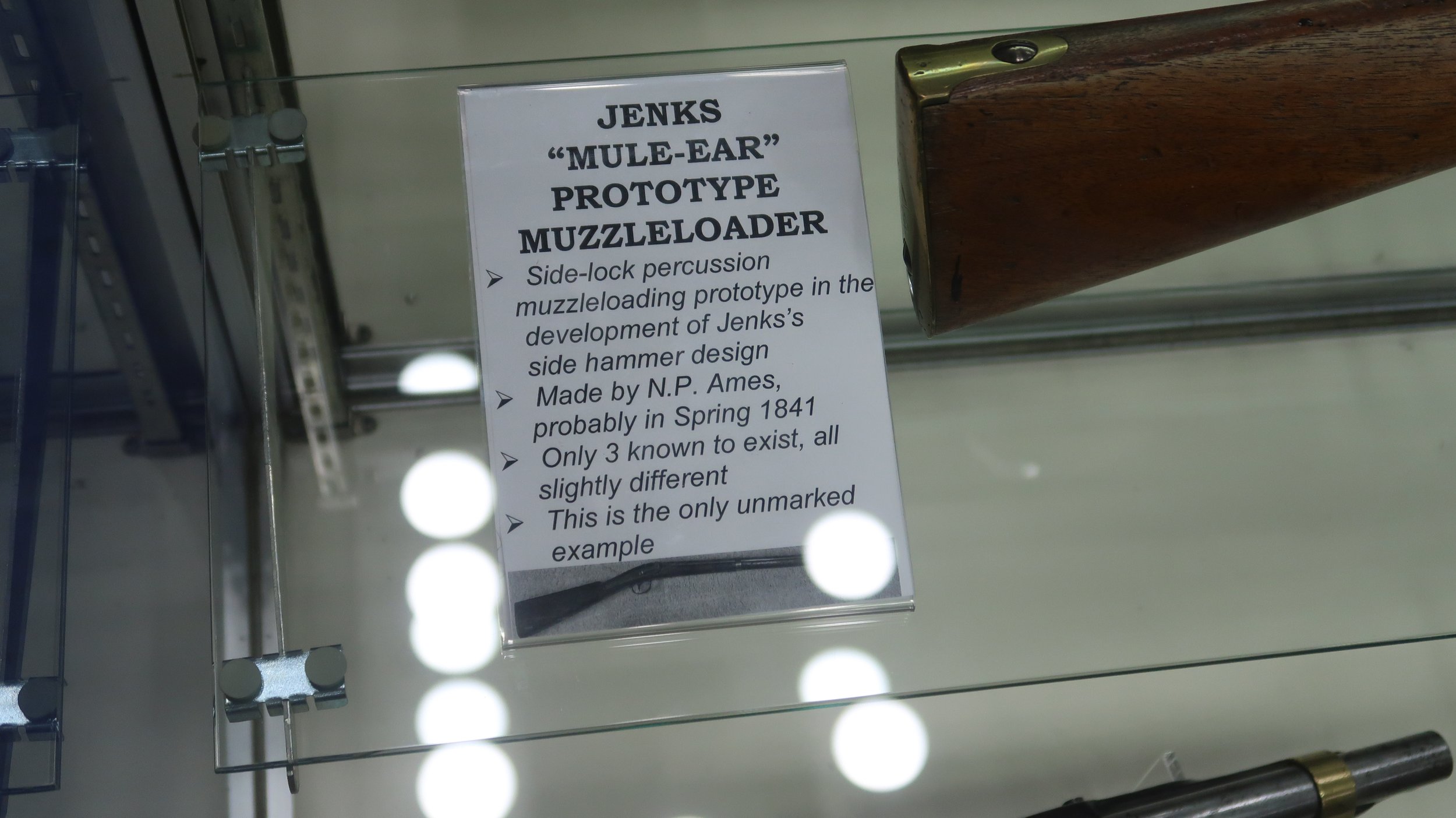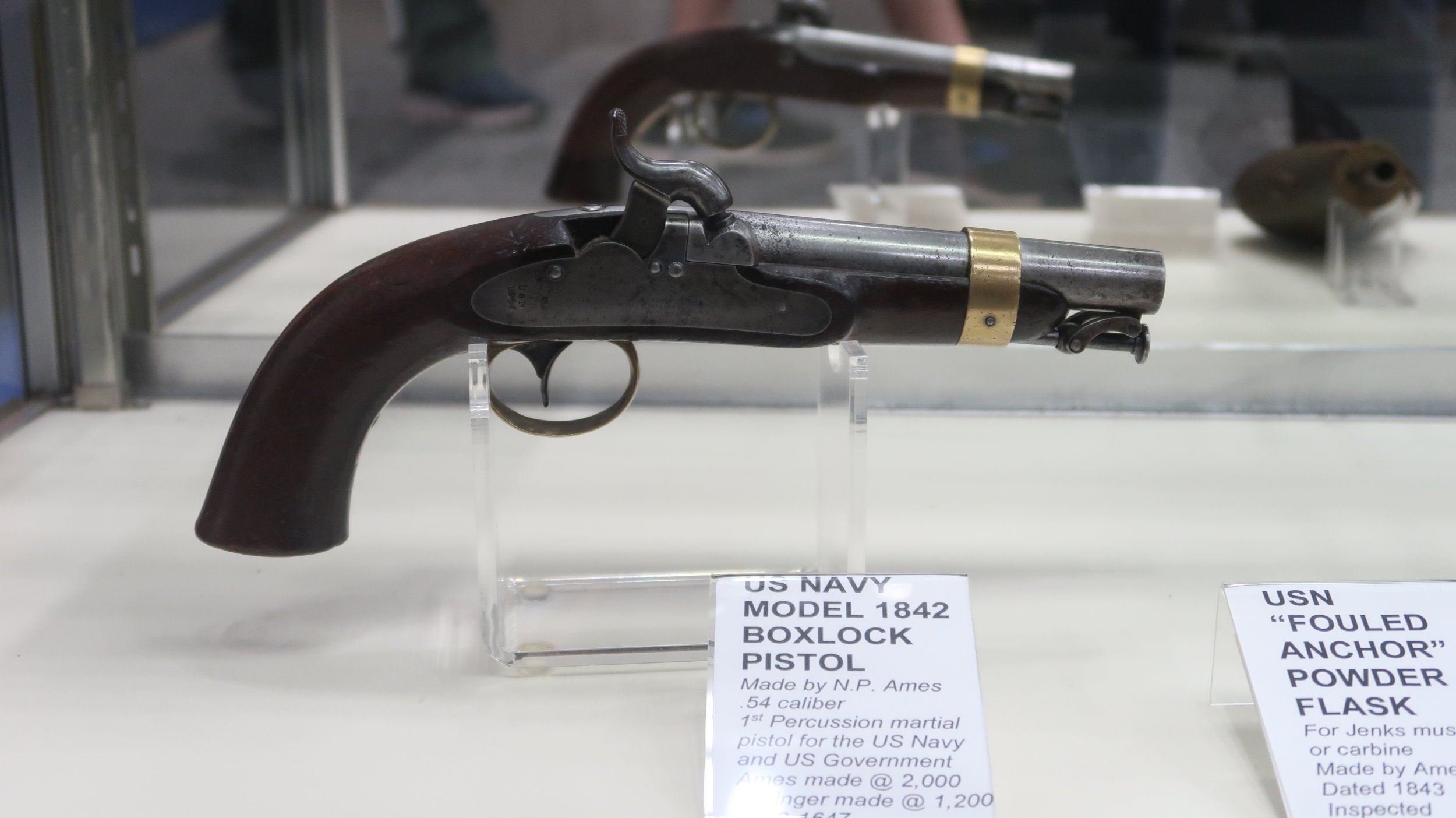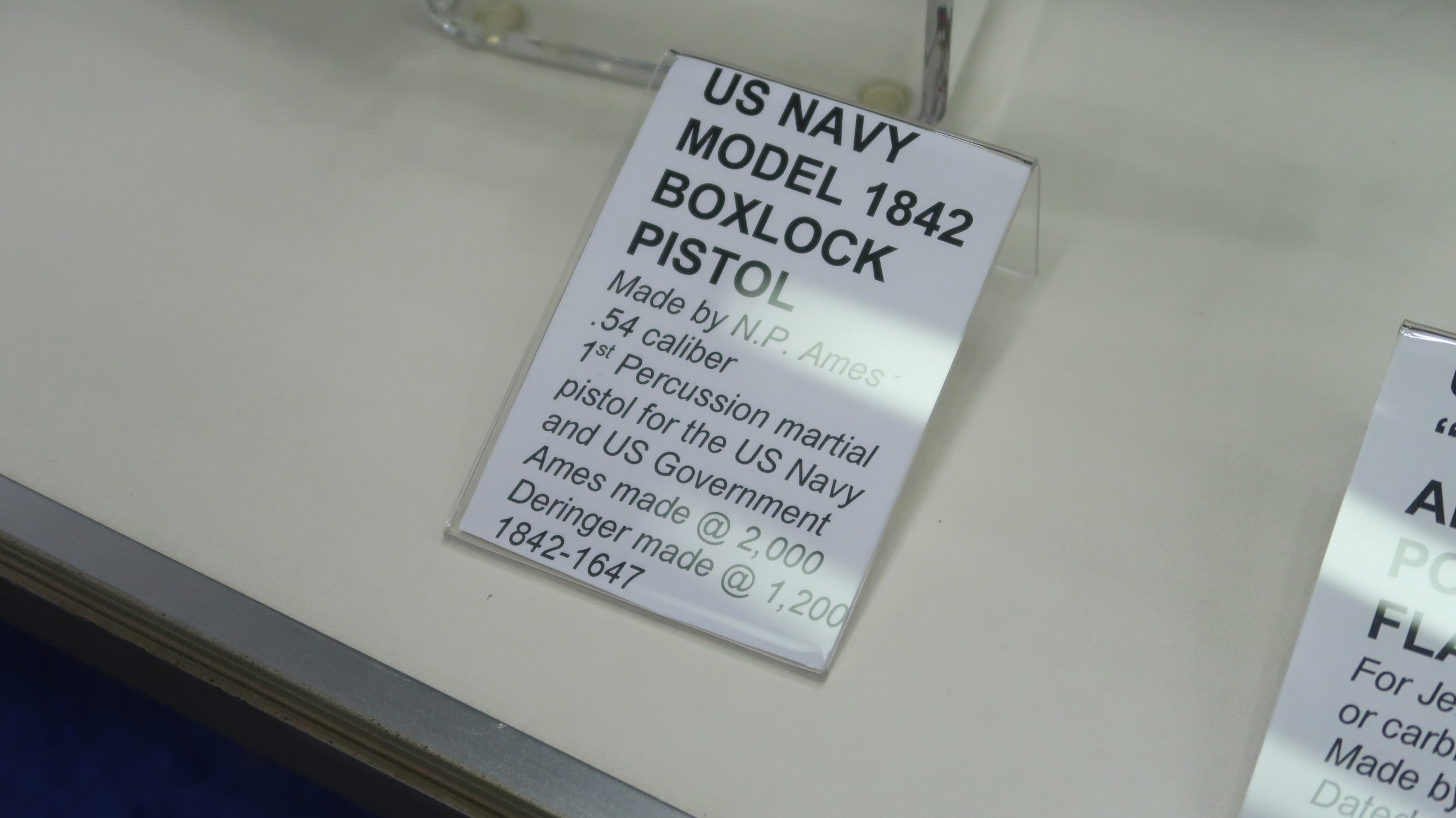History of the Jenks Mule Ear Lock with the Virginia Gun Collectors Association | NRAAM 2023
Today we’re with Marc Gorelick at the 2023 NRA Annual Meeting to learn about the Virginia Gun Collectors Association display on the history of the "Jenks Mule Ear”. The Jenks Mule ear started life as a muzzleloader in the 1840s but was soon ‘updated’ into a breechloading arm with goals of being adopted by the military in the lead up to the American Civil War.




A total of about 4,250 of these Jenks "Mule Ear" carbines were made in the period c. 1843-1846.
Jenks (U.S.) Model 1841 Navy Swing-block Percussion Musket (single-shot/ breech-loading/ black powder/ ball ammunition)
During the Mexican War, a single-shot breech-loading carbine was widely used by the United States Navy. Designed by William Jenks, about 4,000 of these arms were manufactured for the Navy by N.P. Ames of Springfield, Massachusetts. These carbines are stamped by naval inspectors. They are fired by means of a percussion cone mounted on the right side. This location requires a hammer that swings sideways. When in its cocked position, the side hammer looks something like a mule's ear. These carbines are among the first percussion arms to be used in U.S. maritime combat.
- Dr. William L. Roberts, THE AMERICAN LIBERTY COLLECTION; #54
The Jenks Mule Ear was invented by William Jenks of South Carolina, who moved north after filing his patent to be closer to potential manufacturers and as the lock markings make clear struck a deal with the Ames brothers. His first contract for 100 flintlock carbines in 1839 was not a great success, but the Navy liked his design and its percussion configuration became the standard navy breechloader of the early-to-mid 1850s. The Navy signed its first contract for percussion versions in 1841, encompassing one thousand rifles and 500 carbines. The rifles were delivered between December 1843 and December 1844. The initial carbines were delivered starting in May 1843 and proved more popular, with three more contracts coming Jenks’s way from 1842 to 1844 (and delivered through 1846) for a total of 4200 carbines. The army only ordered another 44, but the Navy went so far as to issue a fourth contract in 1845 for 1,000 more, fitted with the Maynard tape primer. Judging from McAulay’s tables of contracts and purchases, this one was likely among 300 delivered the Boston Navy Yard in November 1845.
Jenks’s system used a side-hammer with vertical thumbpiece (hence the “mule-ear” nickname,) but his innovation was the use of a sliding breech bolt for loading. Raising and drawing back a lever at the wrist disclosed a loading aperture and drew back a plunger to admit the ball and powder. By 1861 other arms had largely replaced it for Navy use and A.M Eastman (of “Hall Carbine Affair” fame) purchased somewhere between 2800 and 3,143 from the Navy, and had them rifled and loading aperture altered to an oval shape to take a fixed cartridge, as this one shows, eventually placing them on the private market.
